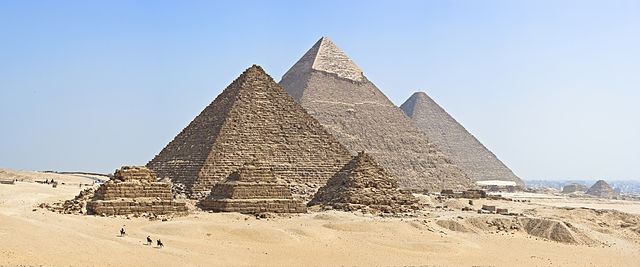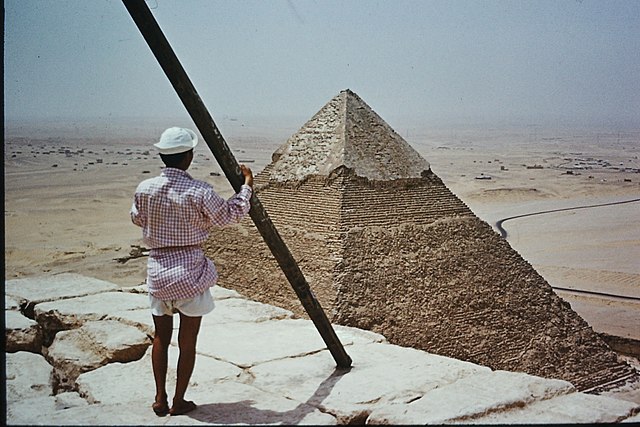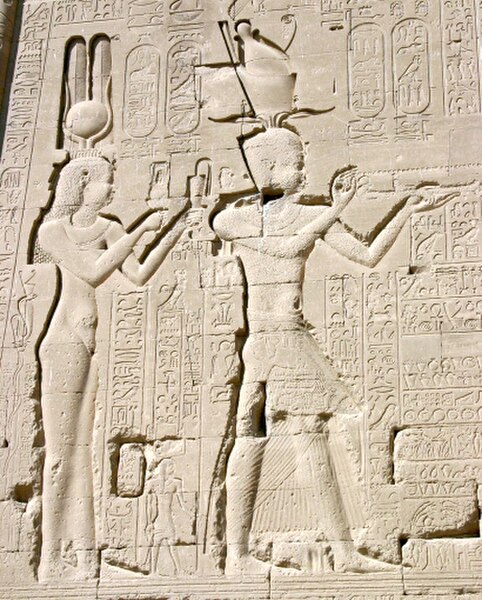The Giza pyramid complex in Egypt is home to the Great Pyramid, the Pyramid of Khafre, and the Pyramid of Menkaure, along with their associated pyramid complexes and the Great Sphinx. All were built during the Fourth Dynasty of the Old Kingdom of ancient Egypt, between c. 2600 – c. 2500 BC. The site also includes several temples, cemeteries, and the remains of a workers' village.
The three main pyramids at Giza, together with subsidiary pyramids and the remains of other structures
Pyramids of Ghizeh. 1893. Egypt; heliogravure after original views. Wilbour Library of Egyptology. Brooklyn Museum
The Great Pyramid and the Great Sphinx of Giza in 1914 (Autochrome Lumière)
View from top of the Great Pyramid to the Pyramid of Khafre
Egypt, officially the Arab Republic of Egypt, is a transcontinental country spanning the northeast corner of Africa and the Sinai Peninsula in the southwest corner of Asia. It is bordered by the Mediterranean Sea to the north, the Gaza Strip of Palestine and Israel to the northeast, the Red Sea to the east, Sudan to the south, and Libya to the west. The Gulf of Aqaba in the northeast separates Egypt from Jordan and Saudi Arabia. Cairo is the capital and largest city of Egypt, while Alexandria, the second-largest city, is an important industrial and tourist hub at the Mediterranean coast. At approximately 100 million inhabitants, Egypt is the 14th-most populated country in the world, and the third-most populated in Africa.
Temple of Derr ruins in 1960
The Giza Necropolis is the oldest of the ancient Wonders and the only one still in existence.
The Weighing of the Heart from the Book of the Dead of Ani
The Ptolemaic Queen Cleopatra VII and her son by Julius Caesar, Caesarion, at the Temple of Dendera








